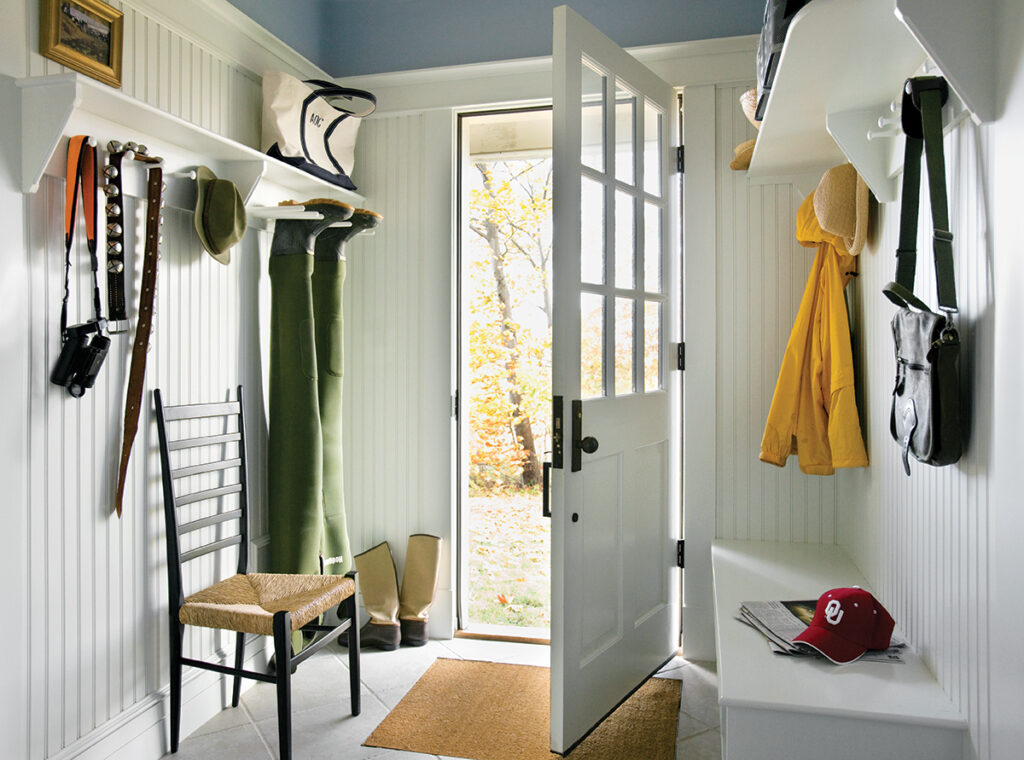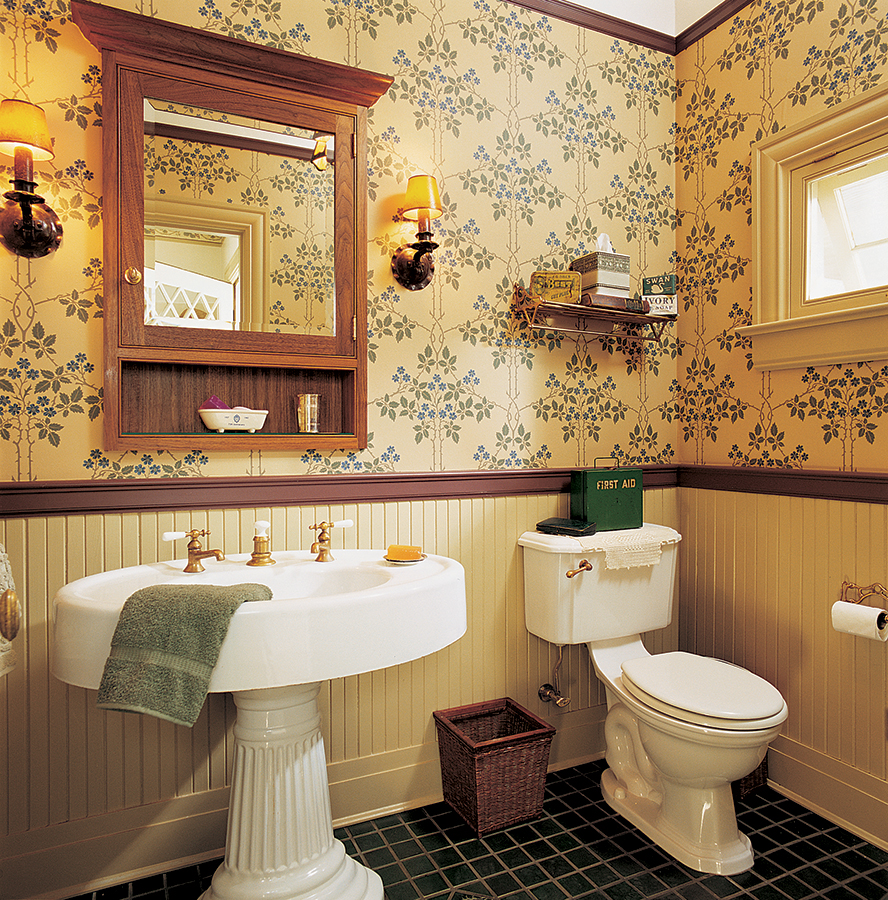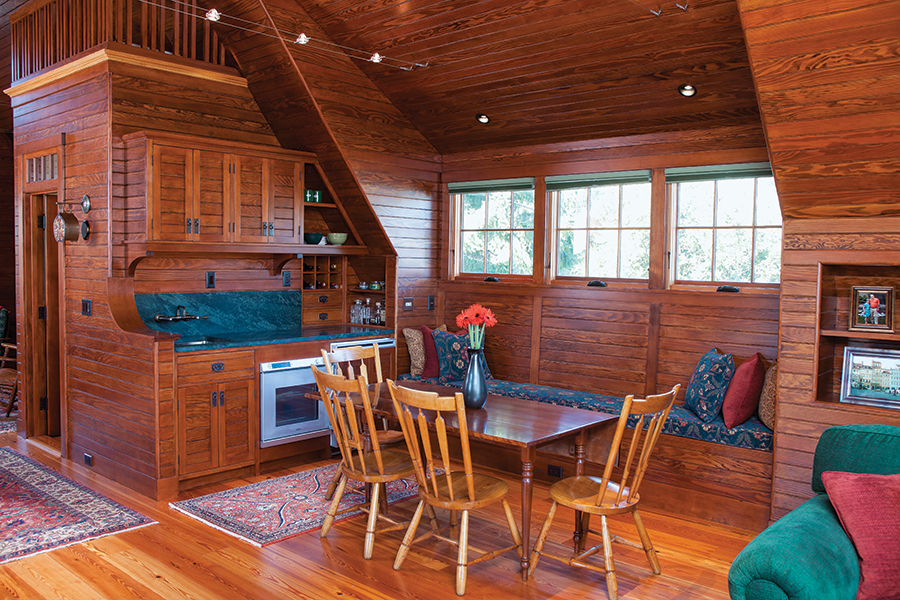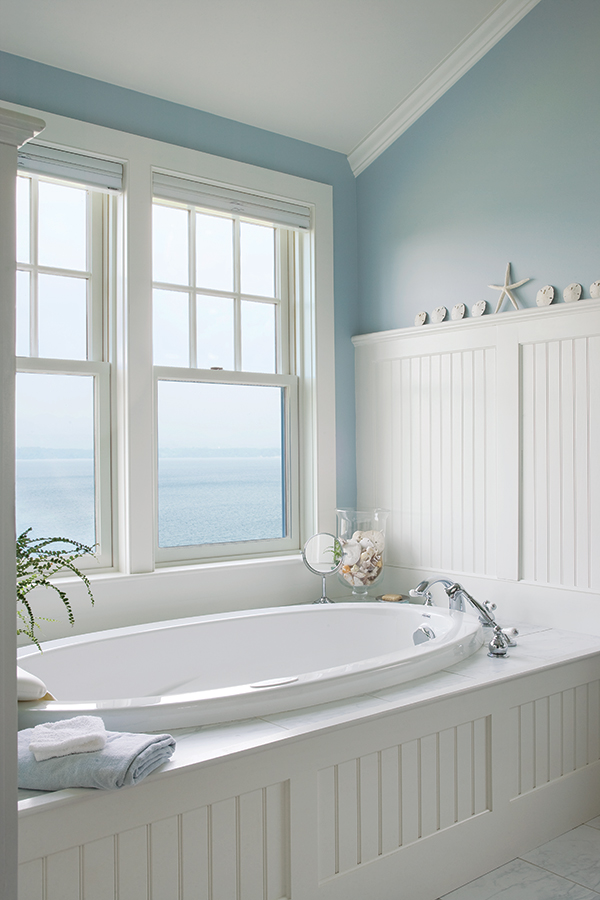Beaded board, or beadboard, is a variation on a centuries-old, tongue-and-groove panel construction. (The bead refers to a round profile created along the length of the board, accompanying a groove or “quirk” cut into the board.) Some of the earliest houses in Colonial America had paneled walls: wide boards with beveled and beaded edges, laid vertically, called shadow-edge paneling. The boards and their decorative edges were planed by hand, and the beads were often quite large—a half-inch wide or more. By sometime in the 19th century, it was more common to see narrow beads from 1 ½” to 3″ apart on boards sold by the linear foot.

By this time, power saws were in general use, so finer cuts could be made easily and the material had become common.
Machine-produced beadboard was associated with the less formal spaces of buildings: kitchens, hallways, and even stables. (In various parts of the country, old-timers may refer to beadboard as “porch-ceiling lumber,” “train-car siding,” or just plain “wainscot.”) Much of this utilitarian beadboard was clear-finished with shellac or varnish. That way, swelling and shrinking between boards would go unnoticed. Paint, on the other hand, tends to crack along the t&g edges with seasonal movement. In attics and pantries, the beadboard wainscot or wall cladding may have been whitewashed or painted in white enamel for cleanliness and to reflect light.

As the Victorian period progressed, so did the ornamental use of even machined woodwork. Boards were produced in 3/8″, ½”, and 5/8″ thicknesses and widths of 2 ½”, 3 ¼”, 4 ¼”, and 5 ¼”. Wider boards were also produced with multiple quirks and beads (milled into the surface, but not at a t&g connection).
Beaded boards, in different widths and with multiple beads, appeared in public rooms and grander houses. The boards were laid up either horizontally or vertically, or both ways on the same wall. Laying boards on the diagonal and including special battens and mouldings was popular in so-called Eastlake interiors of the Aesthetic Movement period. Beadboard was favored for the interiors of “summer cottages” and Shingle Style houses in resort areas of the Northeast—houses designed to be deliberately informal.

The new interior is fully clad in beadboard. Photo: Randy O’Rourke for Frank Shirley Architects
Painted beadboard, especially in white paint, is not new. Many an old bathroom or hallway wainscot long ago was painted to freshen or modernize it. Such greens as hunter and teal were common in the Northeast, too, and brighter colors are not unheard-of. If your beadboard is Douglas fir or oak, consider a clear finish. Pine may look better primed and painted.

Today, beadboard may be purchased as single boards in the traditional way, or as wider boards with multiple milled beads, as well as in pre-assembled panels and kits. Beadboard is sold in various widths and wood species, and as pretreated hardwood for exterior use. Look-alike products are made in MDF, composites, vinyl, and even as peel-and-stick wallpaper. Several companies are making high-end ceramic wall tile that mimics the look of beaded-board wainscot with a base and chair rail. A revival of the use of real, unpainted beadboard means it is being custom-milled in Douglas fir and even mahogany.
Related Resources
Stickley
stickley.com
Re-issues of Stickley furniture incl. settle
BEADBOARD
Multiple materials, board widths, kits, wainscot & ceiling panels, yellow pine with matching trim, all at Lowe’s and Home Depot.
specialties
Aeratis
aeratis.com
Synthetic, historically accurate T&G beaded ceiling
American Beadboard
americanbeadboard.com
MDF for kitchen, bath, basement; 8’ panels, prepackaged kits in different heights & for ceilings
Architectural Depot
architecturaldepot.com
MDF or vinyl, prefinished in 3 colors
Baird Brothers
bairdbrothers.com
Poplar, red oak, maple, cherry, primed poplar; prefinished avail.; special order on other species
Elite Trimworks
elitetrimworks.com
PVC beadboard in white or brown
MantelCraft
mantelcraft.com
Beadboad kits, unfinished or prefinished, paint-grade or red oak
New England Classic
newenglandclassic.com
Birch, pine, oak, maple, pecan
Vintage Woodworks
vintagewoodworks.com
T&G grooved beadboard and V-groove board in wood, 19 species, milled one board at a time; also AZEK; cap moulding.
Whidbey Millhouse
whidbeymillhouse.com
Solid-wood ceiling & soffit, V-groove, shiplap
Windsor One
windsorone.com
T&G boards in various widths; treated hardwood







